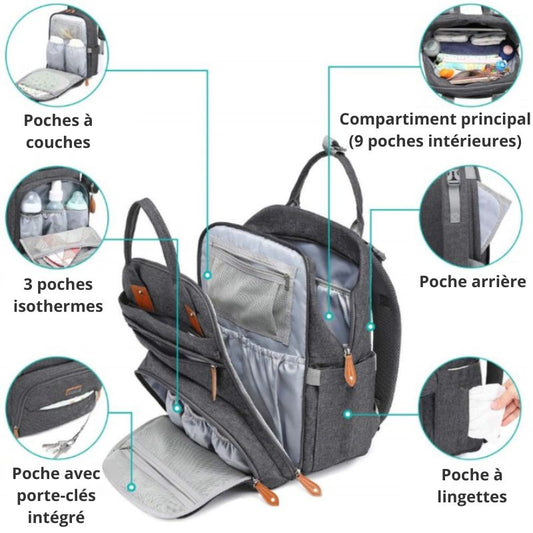In the summer of 2017 , a landmark study of chronic traumatic encephalopathy (CTE) related to American football was revealed in Boston. CTE is a degenerative brain disease common in American football players that results from repeated head impacts. Neuropathologist Dr. Ann McKee , affiliated with Boston University, studied the brains of 202 deceased American football players . Of the 111 former NFL players, 110 brains showed signs of severe CTE. Although the study used samples provided by families who suspected the condition, the results were striking. Of the 91 other (non-NFL) players, 87% also suffered from the condition. This included semi-professional players, college players, and even youngsters who had only played in high school.
Discover our Breast Pump collection.
The data are particularly concerning when looking at youth: Among high school players who stopped playing after high school, 3 of 14 had signs of mild CTE, and 48 of 53 of the college players studied had signs of more severe CTE.
The impact of ETC in American football players
CTE affects the parts of the brain responsible for memory, cognition, executive function, and emotional control. People with the condition often experience symptoms such as cognitive impairment, confusion, aggression, dementia, depression, and suicidal thoughts. Zac Easter ’s story is a tragic example. Zac began playing football at age 8 in Iowa and continued through high school. At age 24, suffering from chronic headaches, slurred speech, and depression, he committed suicide. His autopsy revealed severe CTE. His parents are now campaigning to raise awareness about the dangers of this disease in young players.
Brain Injury Risks in American Football
In the United States, more than 3 million children ages 6 to 18 play football each year. The risks of brain injury in this sport are high, even without an apparent concussion. Repetitive blows received during practices and games, called subconcussive blows , increase the risk of developing CTE. In a typical football game, a linebacker can receive more than 50 blows to the head . The longer a person plays the sport, the higher their risk of developing CTE. This explains why many college players already show significant signs of the condition after several years of playing.
Wake Forest study: worrying results for young players
In 2016 , a study conducted by Wake Forest Baptist Medical Center measured the effects of head injuries sustained during a single football season in children ages 8 to 13. The researchers fitted the young players with helmets with sensors to measure impact forces during the season. Brain MRIs performed before and after the season revealed alarming changes in the children's brains' white matter, without them showing any visible symptoms.
The youths sustained about 10 significant blows to the head during each training session, with an impact force comparable to that of a moderate car crash (about 45 Gs). Particularly troubling is that even children without apparent concussions showed brain changes associated with the blows they sustained. These findings underscore the dangers of repeated, long-term impacts, even without immediate signs of trauma.
Should we continue to encourage American football among young people?
Dr. Bennet Omalu , a neuropathologist and the first to discover CTE, has compared contact football to a form of child abuse. As a pediatrician, and given the current data, it is hard not to share this concern. Why continue to encourage a sport that can cause such damage, when there are other sporting alternatives that are less dangerous to children's brain health ?
American football is not the only sport at risk
While American football is one of the top sports associated with high rates of concussions and brain injuries, it is not alone. Rugby and hockey also carry significant risks of head injuries, as do some more popular sports like soccer and basketball . A 2017 study found that female athletes, particularly those playing soccer, are 12% more likely to suffer concussions than their male counterparts.
Conclusion
It is critical to consider these data before encouraging young people to play American football. While there is no need to ban the sport altogether, it is crucial for parents to understand the risks their children are exposed to. Protecting the brain health of young athletes should be a priority.
In the coming years, a blood test may be available to diagnose CTE in living people, which could help us better understand the disease and its long-term effects. Until then, it's important to remain vigilant about the hidden dangers of American football.
To learn more about the risks of American football, check out this article .























































